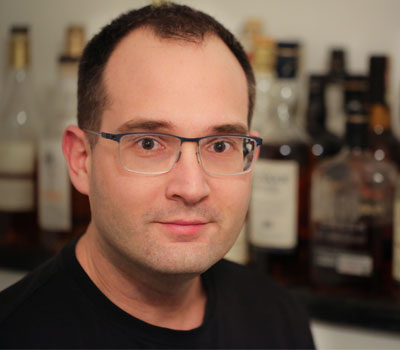Evan Hansen was brewing beer in his college apartment when he first got turned on to wine. Today, he’s a founding partner at four-time Beard nominee Selden Standard, where he oversees what has become known as one of Detroit’s most ambitious wine lists.


Were there any surprises when you ran the numbers?
There are always a few surprises, like the G.D. Vajra Langhe Claré J.C. Nebbiolo. Vajra, in Piedmont, makes this 100 percent nebbiolo, but it’s based off … not really a recipe but a description of a nebbiolo that would have existed in the late 1700s. It’s kind of an esoteric, super light red. We put that on and I expected to be sitting on it for a few months, but it’s virtually all gone and it’s only been on the list for six or eight weeks.
What do you attribute the success of the Blaufränkisch to? It’s your best seller.
The Moric Burgenland Blaufränkisch has been on and off our list for the entire four years we’ve been open and has always been a best seller. People love that wine. It goes well with food, it’s very versatile. It has just enough power and structure to appease people who want a bigger red, but it’s not by any means a weighty wine. It goes well with the food; staff like it; guests like it. It has a little bit of a following here in Detroit as a result. I love that wine.
There are a couple of Alto Adige on your best-selling by the glass list—Peter Dipoli Alto Adige Voglar Sauvignon Blanc and Klaus Lentsch Alto Adige Pinot Bianco. Why those wines? Is there a reason they are performing especially well?
We organize our list by flavor and texture, so there are always one or two lighter, crisper whites, and then maybe something more medium bodied, maybe a little bit bolder, more flavorful; then something that’s pretty well textured, maybe it has some oak on it. We don’t always look to fill those slots with particular grapes or regions, it’s more about whether it fits. We want to maintain an accessible price point, all of those types of things.
I wanted something for somebody who might walk into a restaurant and reflectively say “I want pinot grigio.” I thought that pinot blanc, at $9 a glass, delivered a lot more flavor and interest, but would still be familiar and enjoyable to someone who likes pinot grigio. That particular wine is delicious and delivers a lot of wine for the money.
What do you see for forthcoming beverage trends in Detroit?
I think we’ve started to reach peak cocktail. It’s interesting to see both bartenders and customers looking at more vermouths. You’re starting to see a lot of buyers around town looking at vermouths and fortified wines and lower ABV cocktails.
My personal hope is that Cognac is going to be the next big thing. Bourbon and rye have done so well in the last several years, I’m hoping that brandies take off the same way. There are a lot of great producers in the US doing fruit brandies and things like that and I’d love to see those take off.
Accomplished forager penning a book on wild fungi and recent contributor to the October issue on pairing spirits with insect-rich cuisine, Julie H. Case brings a diverse background in writing and editing. Currently a contributor to SevenFifty Daily, Westchester Magazine and Travel & Leisure, Julie earned her BA in Broadcast Journalism at Arizona State and her MFA in Creative Writing at Pacific Lutheran University. She held senior editorial roles at several publications for the University of Washington and served as Senior Editor for SagaCity Media, where she launched several magazines, including Washington Wine, while editing the firm’s stable of local visitors’ guides.
















